Utilizing Rooftop Renewable Energy Potential for Electric Vehicle Charging Infrastructure Using Multi-Energy Hub Approach
Abstract
:1. Introduction
2. Electric Vehicles (EVs)
2.1. Specifications
2.2. Chargers
2.3. Greenhouse Gas (GHG) Emissions
2.4. Rooftop Assessment
3. Methodology
3.1. Superstructure
3.2. Rooftop Area Estimation
3.3. Model Formulation
3.3.1. Objective Function
3.3.2. Energy Hub
3.3.3. Renewable Energy Technology
3.3.4. EV Charging
4. Results and Discussion
4.1. Rooftop Area
4.2. Scenario 1: Considering Renewable Energy Technologies with EV Demand Only
- Case 1: best economic option (min Cost);
- Case 2: best environmental option (min CO2);
- Case 3: to consider only PV and grid for power generation (PV only);
- Case 4: to consider only Concentrate Solar Power (CSP) for power generation and grid (CSP only);
- Case 5: to consider only wind and grid for power generation (Wind only).
4.3. Scenario 2: Considering Renewable Energy Technologies with EV + Abu Dhabi City Demand
4.4. Scenario 3: Considering Life-Cycle Emissions of EVs
4.5. Sensitivity Analysis—Market Share of EVs
5. Conclusions
Author Contributions
Funding
Institutional Review Board Statement
Informed Consent Statement
Data Availability Statement
Conflicts of Interest
Nomenclature
| Indices | Explanation | Unit |
| Type of output energy carrier | ||
| Type of input energy carrier | ||
| Time period | ||
| Particular energy hub | ||
| Sets | ||
| Set of output energy carriers | ||
| Set of input energy carriers | ||
| Set of energy hubs | ||
| Time period (30 years) | ||
| Parameters | ||
| Area swept by a blade in wind turbine ( | m2 | |
| Aperture of a solar collector assembling in CSP technology | m | |
| Area of a photovoltaic (PV) module | m2 | |
| Maximum area allocated for energy generation technologies installations at a particular energy hub | m2 | |
| Coupling matrix | ||
| Cost of a particular electric vehicle charger | $ | |
| Capacity factor of a particular energy generation technology | ||
| Carbon emissions associated with each energy generation technology | gCO2/kWh | |
| Capital Recovery Factor | ||
| Discount rate | % | |
| Depreciated present value | ||
| Direct Normal Irradiance exposed to CSP technology | W/m2 | |
| Emissions associated with each internal combustion engine (ICE) vehicle for each km of distance traveled | gCO2/km | |
| Emissions associated with each battery-powered electric vehicle (EV) for each km of distance traveled | gCO2/km | |
| Emissions associated with each plug-in hybrid electric vehicles (PHEV) for each km of distance travelled | gCO2/km | |
| Average distance travelled by internal combustion engine (ICE) vehicles | km | |
| Average distance travelled by battery-powered electric vehicles (EV) | km | |
| Average distance travelled by plug-in hybrid electric vehicles (PHEV) | km | |
| Levelized cost of electricity for a particular energy generation technology | $/kWh | |
| Maximum number of electric vehicles that can be charged using a particular electric vehicle charger | ||
| Ratio of minimum parking spaces allocated for charging electric vehicles at a particular energy hub | ||
| Ratio of minimum parking spaces allocated for charging electric vehicles at a particular energy hub | ||
| Power rating of a particular energy generation technology | W | |
| Performance ratio of a particular energy generation technology | ||
| Rotor diameter of the blades of single wind turbine | ||
| Tax rate | % | |
| Total parking spaces available at a particular energy hub | ||
| Matrix defining connection between energy hubs with their transmission factors | ||
| Density of air | ||
| Continuous Variables | ||
| Total cost of electric vehicle chargers | $ | |
| Capital cost of electric vehicle charging infrastructure | $ | |
| Operating and maintenance cost of electric vehicle charging infrastructure | $ | |
| Total annual cost associated with energy generation | $ | |
| Total annual cost associated with electric vehicle charging infrastructure | $ | |
| Total energy demand by a particular energy hub | kWh | |
| Total annual generated emissions—objective function | gCO2 | |
| Annual CO2 emissions produced from energy consumption through various technologies including renewable and non-renewable | gCO2 | |
| Annual CO2 emissions produced from utilization of electric/Internal Combustion Engine (ICE) vehicles | gCO2 | |
| Energy generated from each of the different energy generation technologies | kWh | |
| Energy transferred between energy hubs | kWh | |
| Total annual cost- objective function | $ | |
| Integer Variables | ||
| Number of battery-powered electric vehicles (EV) | ||
| Number of internal combustion engine (ICE) vehicles | ||
| Number of plug-in hybrid electric vehicles (PHEV) | ||
| Number of solar collector assemblies (SCA) using solar concentrated power (CSP) | ||
| Number of photovoltaic (PV) modules | ||
| Number of wind turbines | ||
| Number of electric vehicle chargers | ||
| Number of electric vehicles charged by a particular electric vehicle charger | ||
References
- Egbue, O.; Long, S. Barriers to widespread adoption of electric vehicles: An analysis of consumer attitudes and perceptions. Energy Policy 2012, 48, 717–729. [Google Scholar] [CrossRef]
- Dietsche, K.-H.; Kuhlgatz, D. History of the automobile. In Fundamentals of Automotive and Engine Technology; Springer Vieweg: Wiesbaden, Germany, 2014; pp. 1–7. [Google Scholar] [CrossRef]
- Mills, J. Test Your Knowledge: Where and When Was the World’s First Petrol Station Established. The Sunday Times, 24 July 2015. [Google Scholar]
- Matulka, R. The History of the Electric Car. Available online: https://www.energy.gov/articles/history-electric-car (accessed on 2 November 2022).
- Gerdes, J. Estonia Launches Nationwide Electric Vehicle Fast-Charging Network. Forbes, 26 February 2013. [Google Scholar]
- U.S. Energy Information Administration. Annual Energy Outlook 2015. Off. Integr. Int. Energy Anal. 2015, 1, 20585. [Google Scholar]
- Mezher, T.; Dawelbait, G.; Abbas, Z. Renewable energy policy options for Abu Dhabi: Drivers and barriers. Energy Policy 2012, 42, 315–328. [Google Scholar] [CrossRef]
- Graves, L. Dubai Announces New Electric Vehicle Incentives. The National, 24 September 2017. [Google Scholar]
- Baldwin, D. UAE Paves Way for Zero-Carbon Electric Cars. Gulf News, 18 December 2017. [Google Scholar]
- Yu, H.; Niu, S.; Shang, Y.; Shao, Z.; Jia, Y.; Jian, L. Electric vehicles integration and vehicle-to-grid operation in active distribution grids: A comprehensive review on power architectures, grid connection standards and typical applications. Renew. Sustain. Energy Rev. 2022, 168, 112812. [Google Scholar] [CrossRef]
- Shang, Y.; Liu, M.; Shao, Z.; Jian, L. Internet of smart charging points with photovoltaic Integration: A high-efficiency scheme enabling optimal dispatching between electric vehicles and power grids. Appl. Energy 2020, 278, 115640. [Google Scholar] [CrossRef]
- Zheng, Y.; Shao, Z.; Jian, L. The peak load shaving assessment of developing a user-oriented vehicle-to-grid scheme with multiple operation modes: The case study of Shenzhen, China. Sustain. Cities Soc. 2021, 67, 102744. [Google Scholar] [CrossRef]
- Bhatti, A.R.; Salam, Z.; Aziz, M.J.B.A.; Yee, K.P. A critical review of electric vehicle charging using solar photovoltaic. Int. J. Energy Res. 2016, 40, 439–461. [Google Scholar] [CrossRef]
- Huang, P.; Ma, Z.; Xiao, L.; Sun, Y. Geographic Information System-assisted optimal design of renewable powered electric vehicle charging stations in high-density cities. Appl. Energy 2019, 255, 113855. [Google Scholar] [CrossRef]
- Osório, G.J.; Gough, M.; Lotfi, M.; Santos, S.F.; Espassandim, H.M.; Shafie-khah, M.; Catalão, J.P. Rooftop photovoltaic parking lots to support electric vehicles charging: A comprehensive survey. Int. J. Electr. Power Energy Syst. 2021, 133, 107274. [Google Scholar] [CrossRef]
- Minh, P.V.; Le Quang, S.; Pham, M.H. Technical economic analysis of photovoltaic-powered electric vehicle charging stations under different solar irradiation conditions in Vietnam. Sustainability 2021, 13, 3528. [Google Scholar] [CrossRef]
- Griffiths, S.; Mills, R. Potential of rooftop solar photovoltaics in the energy system evolution of the United Arab Emirates. Energy Strategy Rev. 2016, 9, 1–7. [Google Scholar] [CrossRef]
- CAA, Types of Electric Vehicles. Canadian Automobile Association. 2016. Available online: http://electricvehicles.caa.ca/types-of-electric-vehicles/ (accessed on 1 August 2016).
- Granovskii, M.; Dincer, I.; Rosen, M.A. Economic and environmental comparison of conventional, hybrid, electric and hydrogen fuel cell vehicles. J. Power Sources 2006, 159, 1186–1193. [Google Scholar] [CrossRef]
- Liu, J. Electric vehicle charging infrastructure assignment and power grid impacts assessment in Beijing. Energy Policy 2012, 51, 544–557. [Google Scholar] [CrossRef]
- Edelstein, S. Electric Car Price Guide: Every 2015–2016 Plug-In Car Specs. Green Car Reports. 2016. Available online: http://www.greencarreports.com/news/1080871_electric-car-price-guide-every-2015-2016-plug-in-car-with-specs-updated (accessed on 2 August 2016).
- Morrow, K.; Karner, D.; Francfort, J.U.S. Department of Energy Vehicle Technologies Program—Advanced Vehicle Testing Activity Plug-in Hybrid Electric Vehicle Charging Infrastructure Review Novem Charging Infrastructure Review. Power 2008, 58517, 34. [Google Scholar] [CrossRef] [Green Version]
- CAA, Charging Stations. Canadian Automobile Association. 2016. Available online: http://electricvehicles.caa.ca/types-of-electric-vehicles/charging-stations/ (accessed on 2 August 2016).
- Schroeder, A.; Traber, T. The economics of fast charging infrastructure for electric vehicles. Energy Policy 2012, 43, 136–144. [Google Scholar] [CrossRef]
- Van Vliet, O.; Brouwer, A.S.; Kuramochi, T.; van den Broek, M.; Faaij, A. Energy use, cost and CO2 emissions of electric cars. J. Power Sources 2011, 196, 2298–2310. [Google Scholar] [CrossRef] [Green Version]
- Shahan, Z. Electric Car Charging 101. EV Obsession. 2015. Available online: https://evobsession.com/electric-car-charging-101-types-of-charging-apps-more/ (accessed on 2 August 2016).
- Ahmad, A. Abu Dhabi Population Swells. The National, 4 November 2014. [Google Scholar]
- Koo, C.; Hong, T.; Park, H.S.; Yun, G. Framework for the analysis of the potential of the rooftop photovoltaic system to achieve the net-zero energy solar buildings. Progress Photovolt. Res. Appl. 2014, 22, 462–478. [Google Scholar] [CrossRef]
- Rubin, E.S.; Davison, J.E.; Herzog, H.J. The cost of CO2 capture and storage. Int. J. Greenh. Gas Control 2015, 40, 378–400. [Google Scholar] [CrossRef]
- Kaul, N. The Bad Boys of Energy Consumption. Gulf News, 8 November 2017. [Google Scholar]
- ADWEC (Abu Dhabi Water & Electricity Company). Statistical Report 1999–2016. Abu Dhabi: ADWEC. 2016. Available online: https://www.ewec.ae/sites/default/files/documents/2016%20Statistical%20Report.pdf (accessed on 2 November 2022).
- Wright, I. UAE Aims to Become International Manufacturing Hub. Available online: https://www.engineering.com/story/uae-aims-to-become-international-manufacturing-hub (accessed on 2 November 2022).


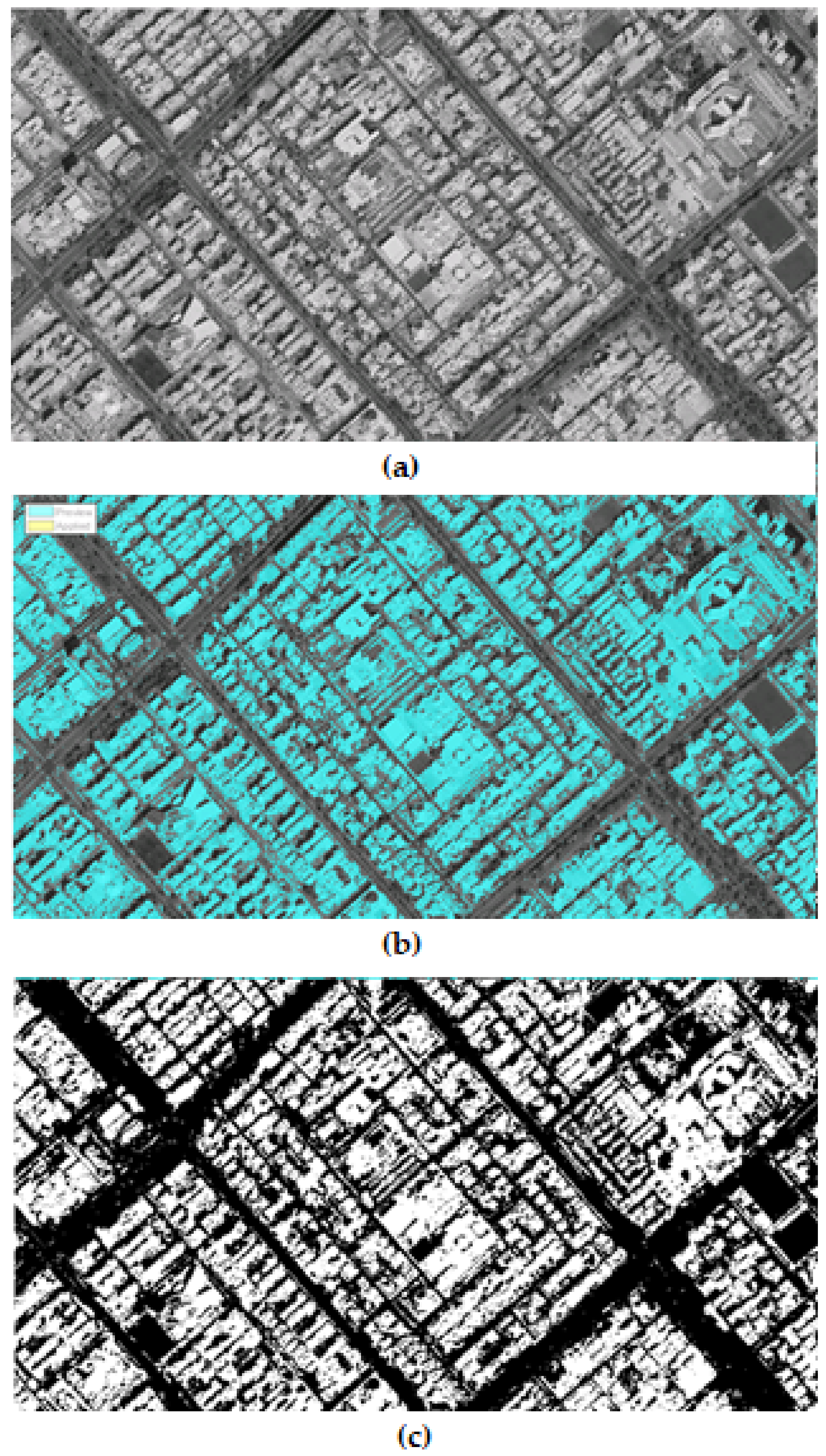

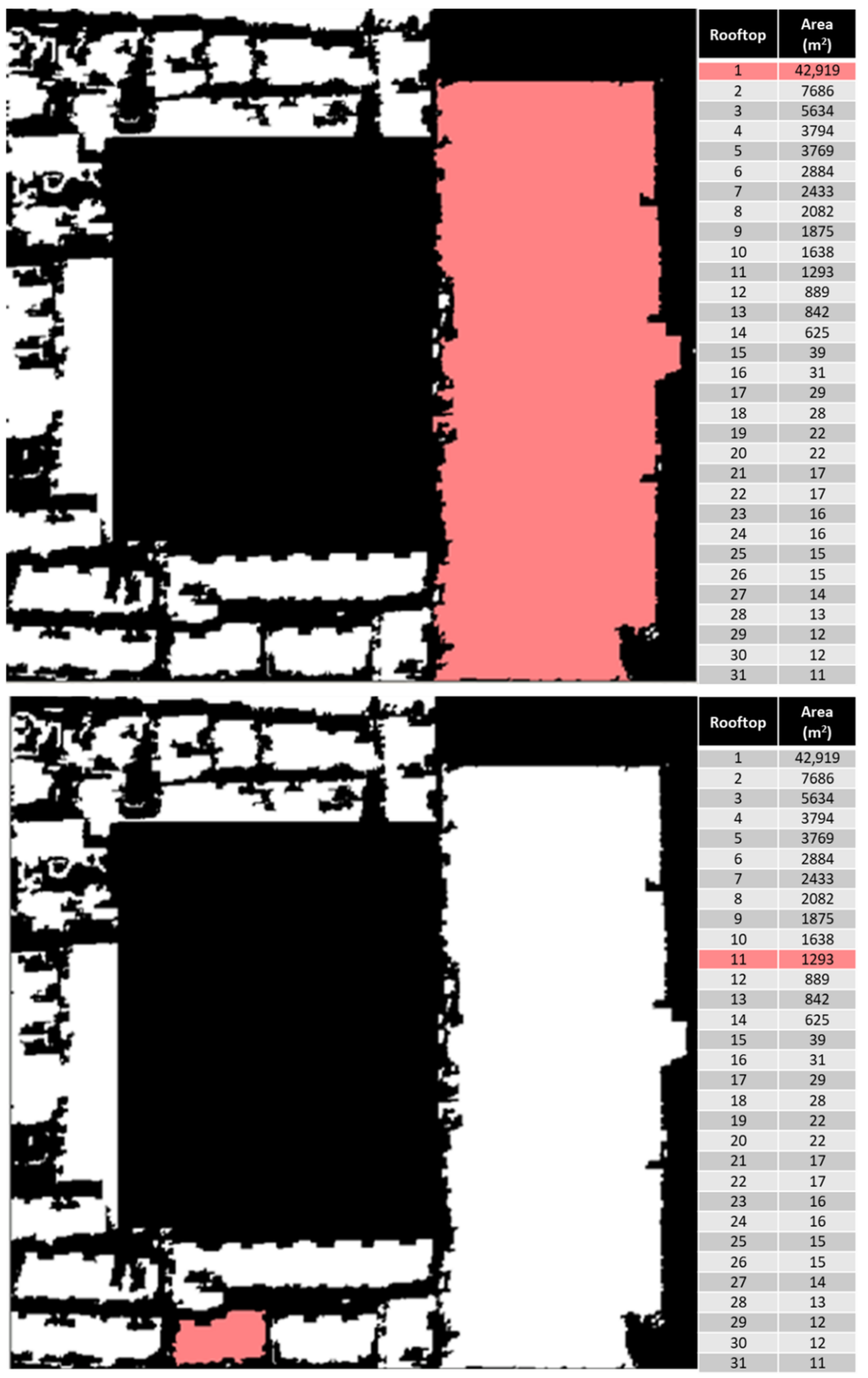

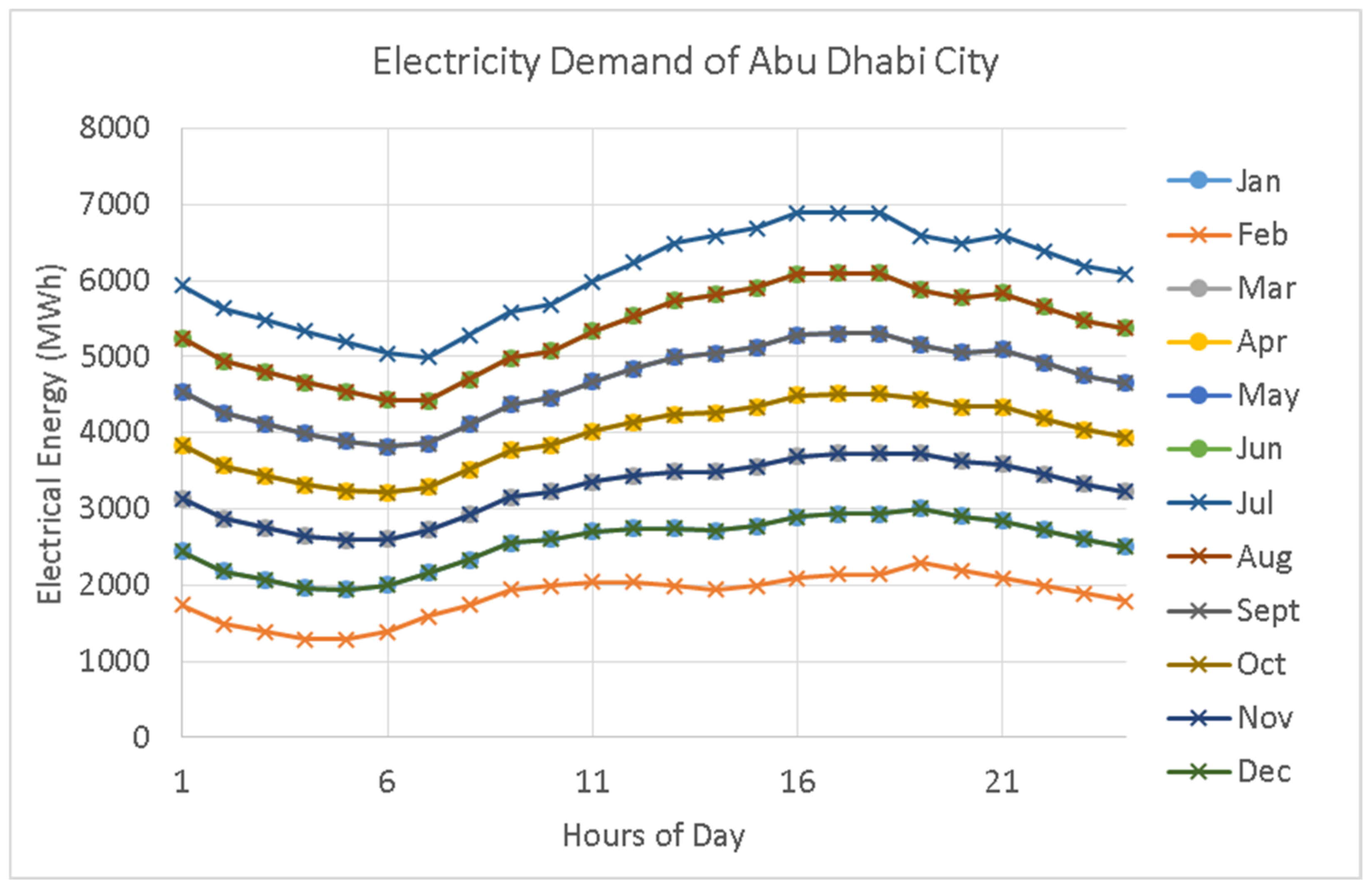
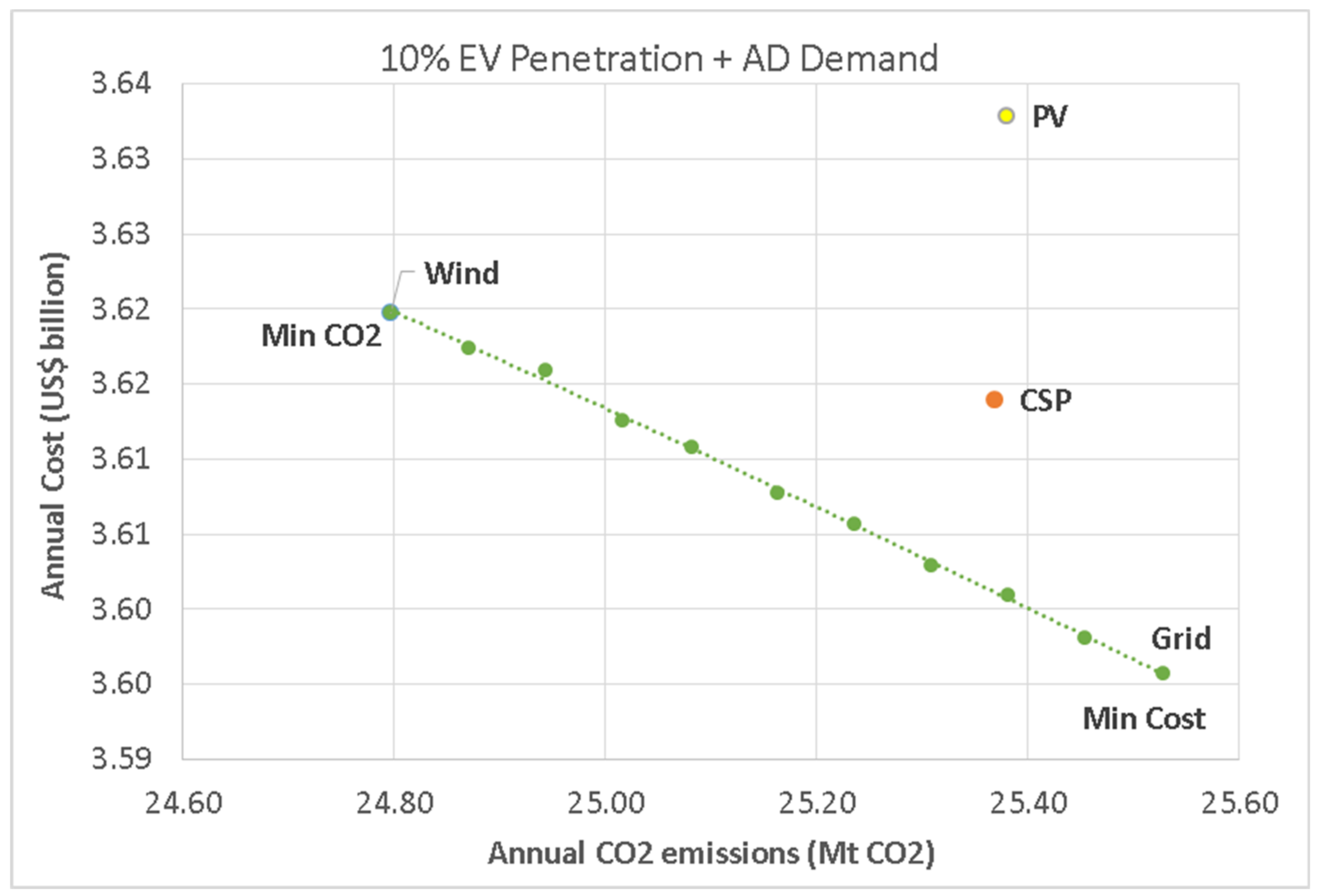
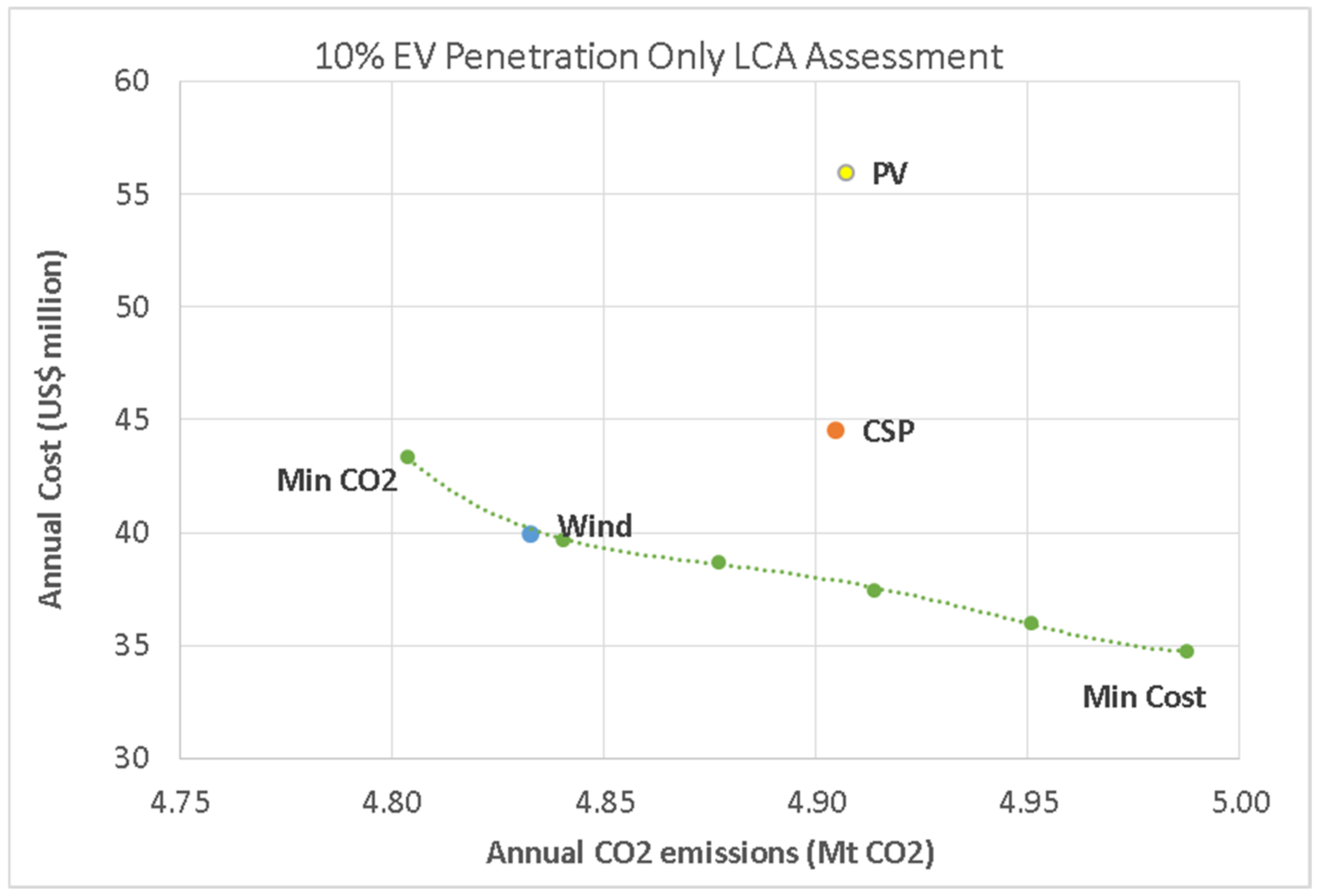
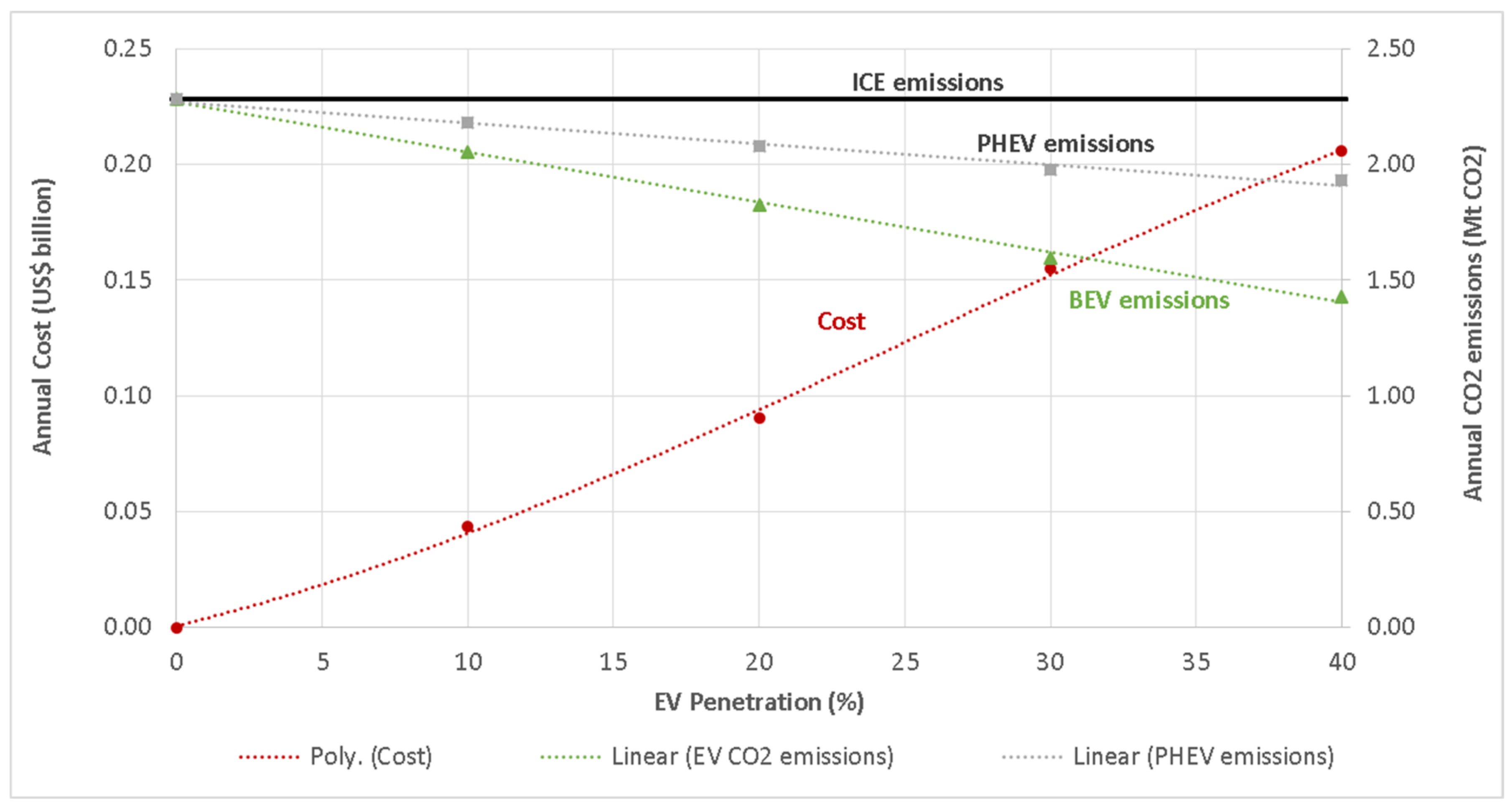


| Model | Manufacturer | Range (km) | Price (USD) | Li-ion Battery Size (kWh) | Type |
|---|---|---|---|---|---|
| Cayenne S E | Porsche | 23 | 87,700 | 10.8 | PHEV |
| i8 | BMW | 24 | 150,000 | 7.1 | PHEV |
| A3 Sportback | Audi | 25 | 39,500 | 8.8 | PHEV |
| GLE550e | Mercedes Benz | 29 | 66,300 | 8.7 | PHEV |
| Fusion Energi | Ford | 34 | 31,995 | 7.6 | PHEV |
| Optima PHEV | Kia | 47 | 35,000 | 9.8 | PHEV |
| Pacifica PHEV | Chrysler | 52 | 43,090 | 16 | PHEV |
| Volt | Chevrolet | 85 | 33,220 | 14 | PHEV |
| i-MiEV | Mitsubishi | 100 | 23,485 | 16 | BEV |
| Electric Drive | Smart | 110 | 25,750 | 16.5 | BEV |
| Focus Electric | Ford | 122 | 29,995 | 23 | BEV |
| Spark EV | Chevrolet | 132 | 25,995 | 19 | BEV |
| e-Golf | Volkswagen | 134 | 29,815 | 36 | BEV |
| 500e | Fiat | 140 | 32,780 | 24 | BEV |
| B250e | Mercedes Benz | 140 | 42,375 | 36 | BEV |
| Soul EV | Kia | 150 | 32,800 | 30 | BEV |
| Leaf | Nissan | 170 | 29,860 | 80 | BEV |
| i3 | BMW | 181 | 42,275 | 33 | BEV |
| Bolt | Chevrolet | 383 | 37,496 | 60 | BEV |
| IONIQ 5 | Hyundai | 345–448 | −47,650 | 58–77.4 | BEV |
| EV6 | Kia | 410 | 44,000–570,000 | 58–77.4 | BEV |
| Model S | Tesla | 435 | 69,500 | 85 | BEV |
| Clarity Fuel Cell | Honda | 589 | 60,000 | - | FCEV |
| Nexo | Hyundai | 595 | 55,000 | - | FCEV |
| Type of Chargers | Level 3 | Level 2 | ||||
|---|---|---|---|---|---|---|
| ‘Super-Fast DC’ Public | DC Public | AC Public | AC Public 3ϕ | AC Public | AC Home | |
| Lifetime (years) | 10 | 10–15 | 10–15 | 10–15 | 10–15 | 10–15 |
| Load limit (V) | 2000 | 500 | 400 | 230 | 230 | 230 |
| Power limit (kW) | 250 | 62.5 | 50 | 7.3 | 3.6 | 3.6 |
| Duration of 20 kWh charge cycle (min) | 5 | 19 | 24 | 164 | 333 | 333 |
| Maximum number of 20 kWh charging EV/day | 288 | 75 | 60 | 8 | 4 | 1 |
| Cost incl. installation (US$/kW) | 585 | 1780 | 2100 | 1600 | 1624 | 325 |
| Case | Power Generated-GWh | Number of Each Technology | |||||
|---|---|---|---|---|---|---|---|
| PV | CSP | Wind | Grid | PV Module | SCA | WT | |
| Min Cost | 0.00 | 0.00 | 0.00 | 277.81 | 0 | 0 | 0 |
| Min CO2 | 0.00 | 44.31 | 233.41 | 0.09 | 0 | 79,489 | 131,578 |
| PV only | 126.88 | 0.00 | 0.00 | 150.93 | 2,781,672 | 0 | 0 |
| CSP only | 0.00 | 126.88 | 0.00 | 150.93 | 0 | 227,607 | 0 |
| Wind only | 0.00 | 0.00 | 233.41 | 44.40 | 0 | 0 | 131,578 |
| Case | Power Generated—TWh | Number of Each Technology | |||||
|---|---|---|---|---|---|---|---|
| PV | CSP | Wind | Grid | PV Module | SCA | WT | |
| Min Cost | 0.00 | 0.00 | 0.00 | 34.90 | 0 | 0 | 0 |
| Min CO2 | ~0 | 0.00 | 1.09 | 33.81 | 511 | 0 | 611,984 |
| PV | 0.22 | 0.00 | 0.00 | 34.68 | 4,824,427 | 0 | 0 |
| CSP | 0.00 | 0.24 | 0.00 | 34.66 | 0 | 424,890 | 0 |
| Wind | 0.00 | 0.00 | 1.09 | 33.81 | 0 | 0 | 611,984 |
Publisher’s Note: MDPI stays neutral with regard to jurisdictional claims in published maps and institutional affiliations. |
© 2022 by the authors. Licensee MDPI, Basel, Switzerland. This article is an open access article distributed under the terms and conditions of the Creative Commons Attribution (CC BY) license (https://creativecommons.org/licenses/by/4.0/).
Share and Cite
Taqvi, S.T.; Almansoori, A.; Maroufmashat, A.; Elkamel, A. Utilizing Rooftop Renewable Energy Potential for Electric Vehicle Charging Infrastructure Using Multi-Energy Hub Approach. Energies 2022, 15, 9572. https://doi.org/10.3390/en15249572
Taqvi ST, Almansoori A, Maroufmashat A, Elkamel A. Utilizing Rooftop Renewable Energy Potential for Electric Vehicle Charging Infrastructure Using Multi-Energy Hub Approach. Energies. 2022; 15(24):9572. https://doi.org/10.3390/en15249572
Chicago/Turabian StyleTaqvi, Syed Taha, Ali Almansoori, Azadeh Maroufmashat, and Ali Elkamel. 2022. "Utilizing Rooftop Renewable Energy Potential for Electric Vehicle Charging Infrastructure Using Multi-Energy Hub Approach" Energies 15, no. 24: 9572. https://doi.org/10.3390/en15249572







